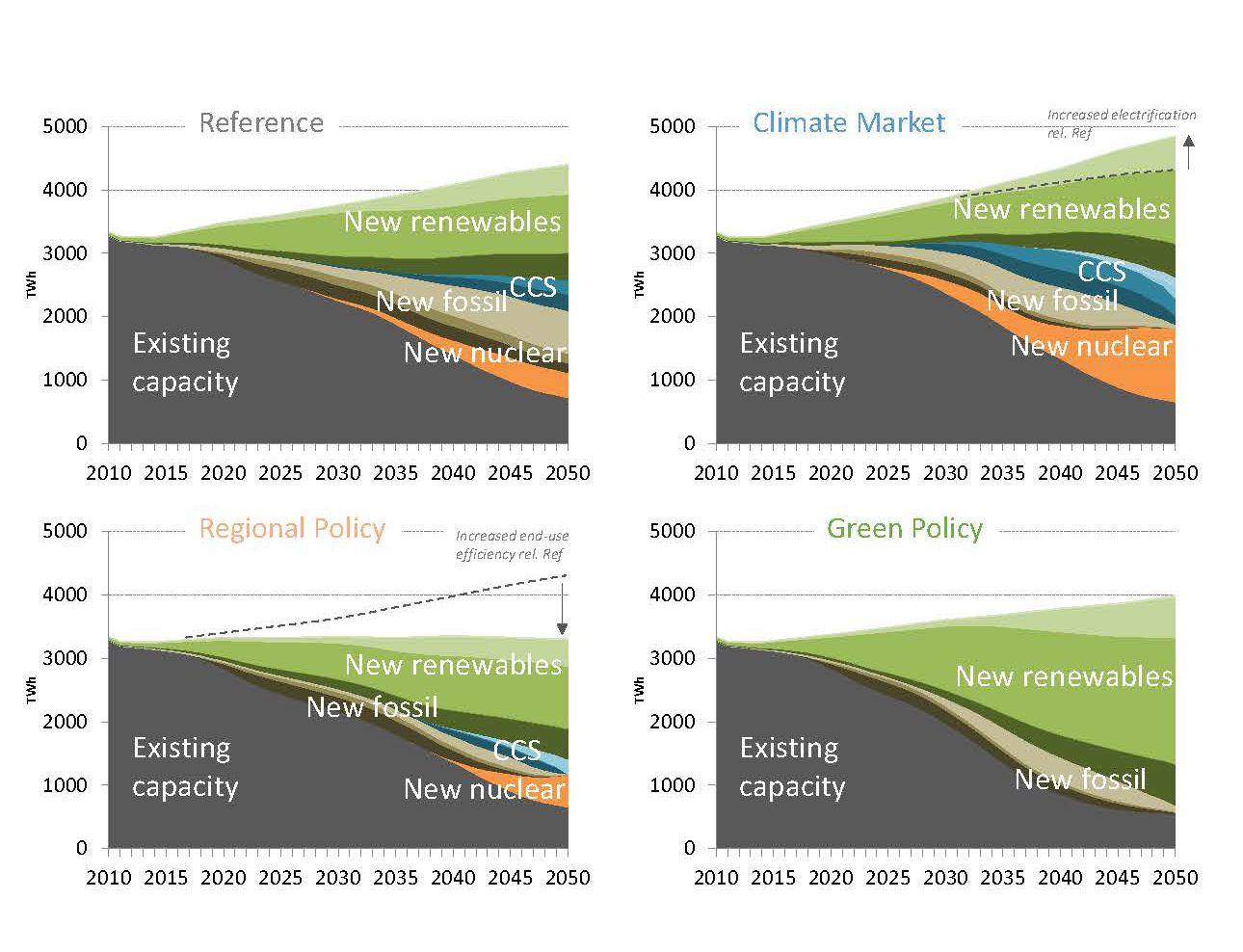



The transition of the energy and electricity systems is subject to significant uncertainties. Consequently, the research dealt with within this area also deals with defining scenarios for the long-term development of European electricity generation up to typically Year 2050. Depending on the policy choices that are made and technological advances, the development pathways of the scenarios may differ significantly, even though they may share common goals, such as ambitious targets for climate change mitigation. We also assess special cases that highlight important considerations and possibilities within the European electricity system. These include nuclear phase-out programmes in Sweden and Germany, exploring the possibility of carbon-free Nordic electricity exports, and the potential for natural gas to be a game changer under certain conditions.
The main scenarios of the Pathways programme cover significant uncertainties related to the implementation of EU energy and climate policies post-2020 and regarding the long-term development of the electricity and energy markets towards Year 2050. The scenarios cover multiple aspects, such as the diversity of climate policies (one “overall climate target” or several goals that include also targets for renewable energy and efficiency), technological developments for CCS and renewables, and whether policy instruments are implemented nationally or across the EU. The results of the modelling show that the outcomes of the four main scenarios differ significantly from each other in many aspects. A continuously increasing supply from renewable electricity (RES-E) is a robust result across the scenarios. However, the total volume of RES-E is scenario-specific. Furthermore, the developments in the marginal costs of electricity and marginal reduction costs of CO2 are significantly affected by the choice of policy set-up and other scenario-specific considerations. This has, of course, a significant impact on the long-term development of several important energy markets across Europe.
- REFERENCE, which assesses the consequences of existing policy instruments. This scenario is based on the reference projection of the EC (2013);
- REGIONAL POLICY, which assesses the consequences of a stringent climate-mitigation target in the EU, with almost 100% reduction of CO2 emissions in the electricity-supply system, together with dedicated policy targets for renewables and energy efficiency. This scenario is loosely based on the EC Roadmap scenario “Energy efficiency” (EC, 2011);
- CLIMATE MARKET, which assesses the consequences of a similar stringent climate-mitigation target as Regional Policy, but concentrated exclusively on reducing CO2 emissions, and not, specifically, on increasing the share of renewables and efficiency. This scenario is inspired by, and loosely based on, the EC Roadmap scenario “Diversified supply technologies” (EC, 2011) and the “Powerchoices Reloaded” scenario analysis initiated by Eurelectric (2013);
- GREEN POLICY, which assesses the impact of an electricity-supply system that is close to 100% renewable by Year 2050. This scenario is loosely based on the EC Roadmap scenario “High RES” (EC, 2011). However, the primary objective of this scenario is to analyse a European electricity system that is almost exclusively made up of renewable electricity generation. The conditions for reaching such a system are, in this case, of less relevance.

Figure: The main scenarios of the Pathways programme.